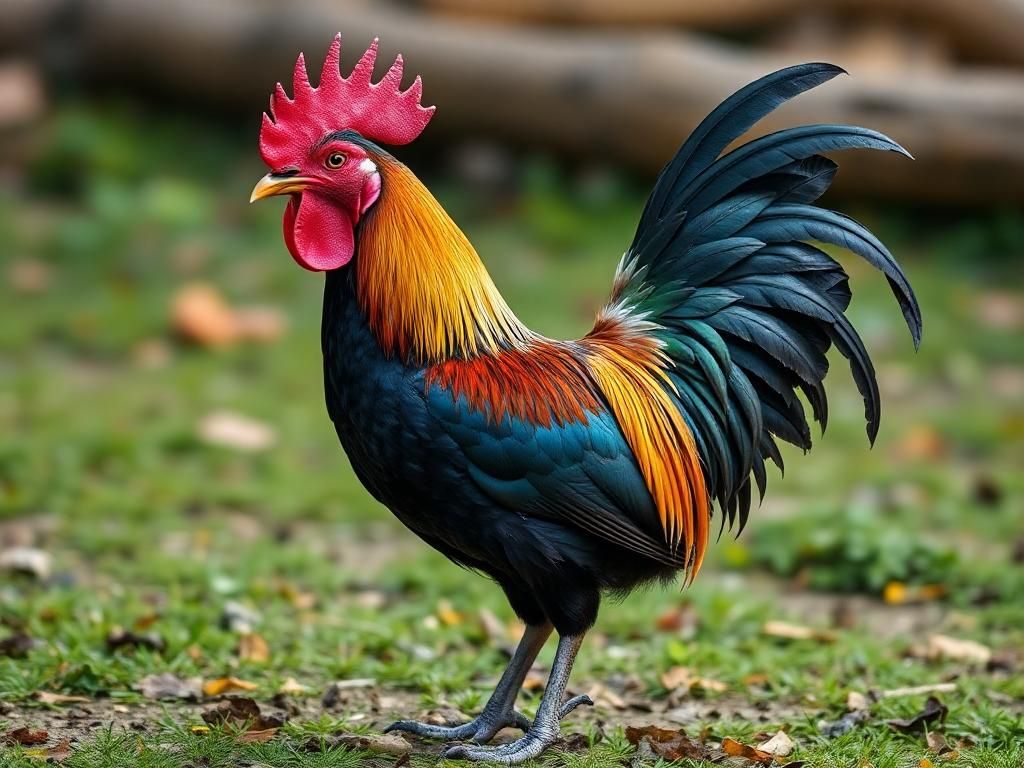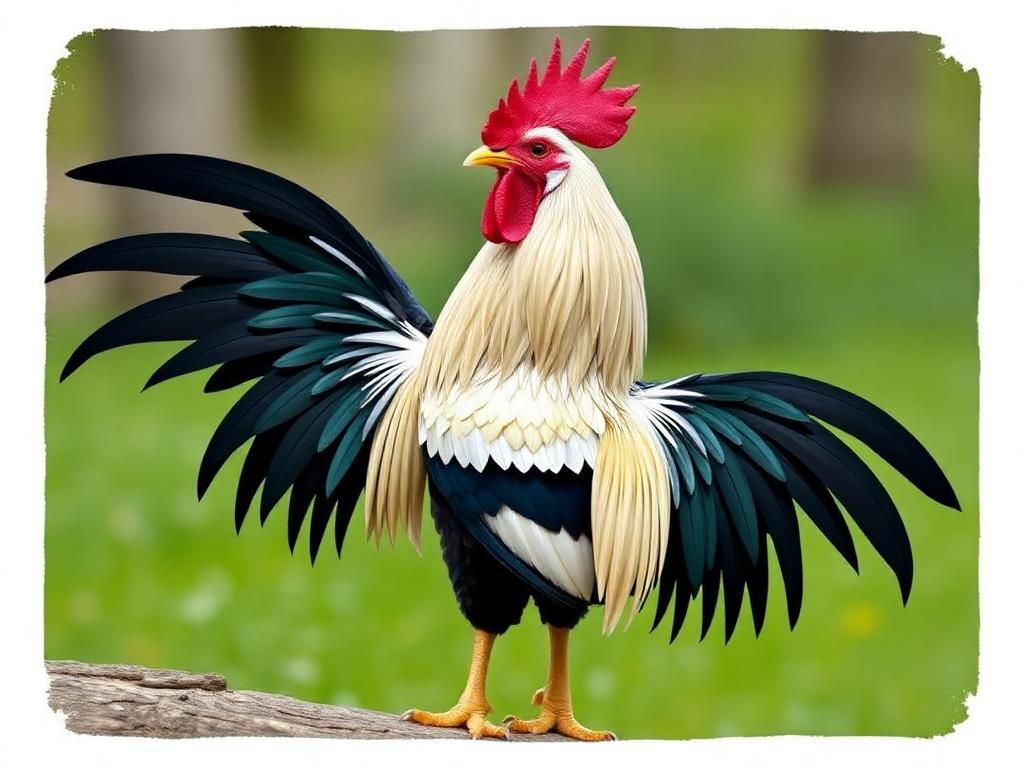The sound of a rooster crow is synonymous with the dawn of a new day, often associated with the rural charm of farm life. However, the crowing of roosters transcends mere morning rituals; it holds significance across various cultures and serves critical roles in agriculture. Understanding the multifaceted aspects of rooster crowing can enrich our appreciation for these remarkable birds, as well as inform those who raise them, either as pets or livestock. This article dives deep into the biology, behavior, cultural relevance, and practical considerations surrounding the timeless act of a rooster’s crow.
Introduction to Rooster Crowing
Brief Overview
Roosters have long been celebrated in diverse cultures for their distinct crowing. In many communities, a rooster crowing symbolizes an awakening, a heralding of morning, and a transition into the day’s activities. In agriculture, the rooster crow is vital, not only marking the onset of dawn but also assisting farmers in maintaining their schedules. Recognizing the importance of rooster crow can provide deeper insights into their role in rural society.
Purpose of the Article
This article seeks to explore the biology, behavior, and cultural significance of the rooster crow. It will also delve into how crowing impacts farmers and pet owners, offering practical insights for managing roosters in various settings.
The Biology of Rooster Crowing
Anatomy of the Rooster
The anatomy of a rooster is uniquely adapted for producing sound. Roosters possess a specialized vocal organ called the syrinx, located at the junction of the trachea and bronchi. This allows them to generate a wide range of sounds, including their famous crow. In contrast to hens, roosters have more developed vocal cords, enabling them to produce louder and more penetrating calls.
Crowing Mechanism
The production of a rooster crow involves the contraction of muscles surrounding the syrinx. When air passes through this organ, it vibrates the vocal cords, creating sound. Hormonal changes, particularly during mating season, enhance crowing frequency and pitch, prompting roosters to crow more frequently to attract hens.
Timing of Crowing
Roosters are known for their instinctual timing, guided by circadian rhythms. Typically, a rooster starts crowing at dawn, often responding to the first light of day. However, factors such as light exposure, internal clocks, and even environmental cues (like the proximity of other roosters) can influence the timing of crowing. For instance, if a rooster perceives that it’s almost daylight, it may start crowing earlier than usual during the summer months.
Types of Crows

Morning Crowing
The traditional morning crow is one of the most recognizable crowing sounds that mark the dawn. This specific crowing time has significant cultural symbolism, indicating not only the start of a new day but also serving as a natural alarm clock for farmers and rural communities. The early morning crow can be seen as a reminder to rise and seize the day, which is reflected in various cultural sayings about the value of early rising.
Other Types of Crows
In addition to the morning herald, roosters crow during the day for various reasons. Early afternoon and late-day crows can happen as part of territory marking. Sometimes, these crows are responses to environmental stimuli like the presence of predators, providing an early warning signal to the flock. Understanding these different types of crowing can help owners interpret their roosters’ behaviors more accurately.
Variations by Breed
There are numerous rooster breeds, each showcasing unique crowing characteristics. For instance, the Silkie is known for a softer, less penetrating sound, while the Plymouth Rock produces a loud, clear crow. By analyzing these variations, one can appreciate the diversity within rooster sounds, enhancing the experience of raising different breeds.
The Role of Crowing in Chicken Behavior
Communication
Crowing is essential in the social interactions among chickens. Roosters use crow sounds to communicate various messages, including warnings about dangers or signaling the discovery of food. Young roosters, in particular, practice their crowing to develop their social skills and assert their presence within the flock.
Territory Marking
A significant aspect of a rooster crow is its role in marking territory. Crowing helps to establish dominance and assertiveness among roosters. The crow serves as a vocal claim to an area, deterring rivals from encroaching on established territories and thus maintaining a structured hierarchy within the flock.
Cultural Significance of Rooster Crowing
Folklore and Myths
Across the globe, roosters and their crows are steeped in folklore and legend. Many cultures view the crowing of a rooster as a sign or omen, often associated with impending change or events. In some societies, hearing a rooster crow at night is considered a bad omen, while in others, it brings good fortune.

Representation in Art and Literature
Roosters appear frequently in art, literature, and media, symbolizing various themes. From van Gogh’s famous paintings of roosters to their portrayal in children’s literature, these birds serve as metaphors for renewal and vigilance. Examining these representations provides insight into how deeply embedded the rooster crow is in human culture.
Roosters in Religion and Traditions
The rooster has significant religious symbolism, especially in Christianity, where it represents vigilance and the announcement of a new day. Numerous festivals around the world celebrate roosters, often involving crowing competitions or displays to honor their importance and contributions to agricultural society.
Challenges and Considerations for Rooster Owners
Noisy Complaints
While enchanting, the rooster crow can also bring challenges for owners, particularly regarding noise. Many neighborhoods have regulations concerning noise, which can lead to conflicts. Solutions such as soundproofing enclosures and strategic placement of coops can help mitigate excess noise. Understanding local laws is crucial before acquiring a rooster.
Health and Well-being
Factors can affect a rooster’s crowing behavior, including stress and illness. A healthy rooster that feels safe and secure in its environment will naturally crow more frequently. Providing appropriate living conditions, such as space, social interaction, and health care, is essential for maintaining normal crowing patterns.
Ethical Considerations
The decision to keep roosters as pets versus livestock poses ethical considerations. Breeding practices can impact crowing behavior and temperament. Responsible breeding is key to ensuring that both owner and rooster experience a harmonious relationship. Understanding these dynamics can assist new owners in making informed decisions about raising roosters.
Conclusion
Summary of Key Points
This exploration of the rooster crow highlights its significance from biological, cultural, and practical perspectives. Rooster crowing is not merely a vocalization; it symbolizes much more, playing a crucial role in marking time, territory, and social interaction among chickens. The rich tapestry of cultural meaning woven around the rooster crow underscores its importance throughout history.
Final Thoughts
Emphasizing the vital role that roosters play in agriculture and cultural narratives invites us to respect and appreciate these creatures.Whether in domestic or wild settings, understanding the complexities of rooster crowing can enhance our connection to nature and the animals within it.
| Aspect | Description |
|---|---|
| Anatomy | Roosters have a highly developed syrinx for sound production and louder vocalizations compared to hens. |
| Crowing Timing | Guided by circadian rhythms; influenced by light exposure and environmental stimuli. |
| Types of Crows | Morning crow signifies dawn; other types include territorial crows in the afternoon and evening. |
| Cultural Significance | Roosters symbolize vigilance, renewal, and change in various cultures and religions. |
| Owner Considerations | Noise complaints, health considerations, and ethical breeding practices are crucial for rooster care. |
FAQs
- Why do roosters crow? Roosters crow to establish territory, communicate with their flock, and mark the onset of a new day.
- When do roosters start crowing? Roosters typically begin crowing at about 3 to 5 months of age, becoming more vocal as they mature.
- Can roosters stop crowing? Yes, factors such as stress, illness, or changes in the environment can affect a rooster’s crowing behavior.
- Are all rooster crows the same? No, different breeds of roosters have unique crowing sounds and patterns that can vary significantly.
- Do all roosters crow in the morning? While most roosters are known for crowing at dawn, they can crow at any time of day in response to various stimuli.
- How can I minimize rooster crowing noise? You can consider soundproofing your coop, providing distractions, or moving the rooster further from neighbors.
